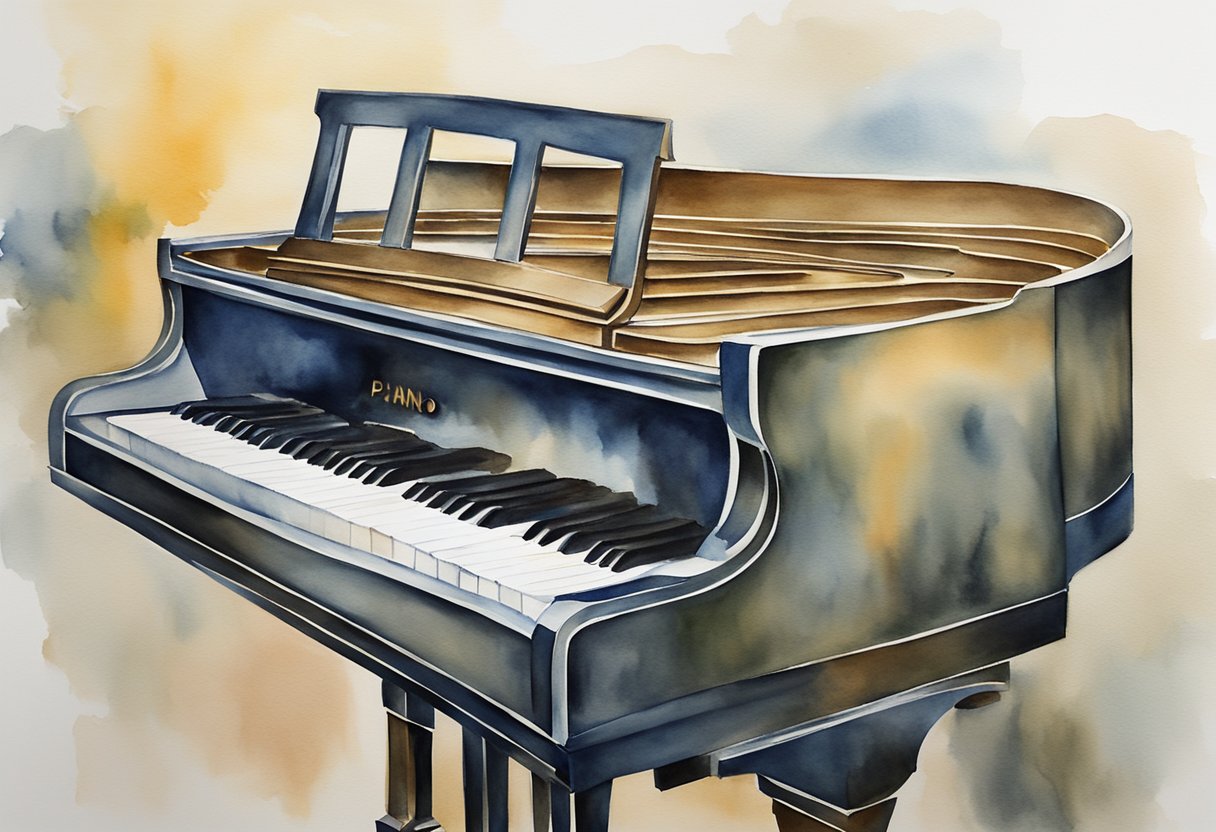As an Amazon Associate I earn from qualifying purchases.
Covering piano keys is often recommended to protect the delicate mechanisms that produce music on your cherished instrument. As a professional pianist and music teacher, I’ve seen numerous ways in which external factors can affect pianos.
Dust and accidental spills, for instance, are common culprits that can cause the keys to stick or become unresponsive, which is why many pianists, including myself, cover their keys after use. By doing so, we keep out dirt, dust, and pet hair, preserving the responsive touch that is essential for dynamic playing.
Want to Learn Piano?Click Here

However, it’s important to mention that piano keys also require air circulation to prevent damage from humidity and to maintain the integrity of the wooden structures within the piano.
In my practice studio, for example, a balance is maintained by covering the keys with a breathable material when not in use, thereby preventing dust accumulation without suffocating the keys with airtight covers.
By adopting these protective measures while remaining mindful of their limitations, you can ensure your piano remains in pristine playing condition.
And who wouldn’t want a well-maintained instrument that’s ready to play beautiful music at a moment’s notice? Whether you’re a beginner looking to take the best care of your first piano or an enthusiast exploring the depths of music theory, these insights will guide you in nurturing your musical journey.
Benefits of Covering Piano Keys

Covering your piano keys is an essential part of piano maintenance that protects your instrument and ensures sustained performance quality. Here are a few specific advantages of using a cover:
Protection Against Dust and Liquids
When you’re not using your piano, dust can accumulate on the keys, which not only affects the look of your piano but also can creep into the delicate internal mechanisms.
A dust cover helps keep the keys clean, reducing the need for frequent cleaning. Likewise, it’s a simple defense against accidental spills and liquids, which can cause significant damage, especially to ivory keys.
Maintaining Tuning Stability and Sound Quality
The humidity levels in your home fluctuate, affecting the wooden components of your piano, primarily the soundboard. This can lead to a loss of tuning stability and variations in sound quality.
By using a piano cover, you help regulate the microclimate around your instrument, thus maintaining a more consistent tuning and the rich tones your piano produces.
Preventing Physical Damage
Scratches and bumps can happen easily, particularly if you live in a bustling household or move your piano often. A robust keyboard cover or piano cover acts as a protective layer, cushioning your piano from potential impacts.
It also helps prevent cracking and other physical damage to ivory keys, preserving both the appearance and the tactile experience of your piano.
By incorporating these protection measures, not only do you prolong the life of your piano, but you also get to enjoy a flawless playing experience every time you lift the cover and let your fingers dance across the clean, well-maintained keys.
Caring for Piano Keys
Properly maintaining piano keys is essential to preserving both the instrument’s playability and appearance. Unwanted dust, dirt, and exposure to undesirable conditions can lead to sticky keys and discoloration. Let’s explore how you can keep your piano looking and sounding its best.
Appropriate Cleaning Methods
To prevent dirt buildup and maintain the aesthetic integrity of your piano keys, gentle cleaning is critical. Use a damp cloth—making sure it’s not too wet—to wipe the keys in a back-to-front motion, avoiding side-to-side movements that could push dirt between the keys. For dusting, a feather duster can be effective in lightly removing surface dust without scratching the keys.
- For ivory keys: clean with a cloth dampened with mild soap and water, drying immediately.
- For plastic keys: a slightly damp cloth should suffice, avoiding harsh chemicals.
Remember, moisture is a key’s enemy, so your cloth should only be damp to the touch, never wet enough to leave droplets.
Choosing the Right Cover Material
A waterproof piano cover is a worthwhile investment to safeguard against accidental spills. When selecting a cover:
- Prefer materials like velvet; they’re gentle on the keys and prevent scratches.
- Ensure the cover is breathable to avoid moisture buildup, which could affect the wooden structure.
- Material choices:
- Velvet: Soft and luxurious, protects from dust and scratches.
- Waterproof options: Great for resisting spills, but confirm they are breathable.
Considerations for Storage and Placement
The location of your piano influences the longevity of its keys. Avoid placing the piano against an exterior wall or near a window to prevent damage from temperature changes and humidity.
- Humidity control: Use a dehumidifier or humidifier to keep humidity levels consistent.
- Temperature: Maintain a stable room temperature to protect the keys from warping or cracking.
- Storage tips:
- Seek a spot away from direct sunlight, which can cause discoloration.
- Find an area with consistent temperature and humidity to prevent damage over time.
Hello & thanks for stopping by! I’m a professional concert pianist and piano instructor. In the United States, I’ve given successful performances in several places including New York, Florida, Connecticut, & New Jersey, I have also performed internationally in Italy and made my Carnegie Hall debut in 2014. I enjoy blogging about the piano, the art of performance, general music, current events and the latest in music production.
